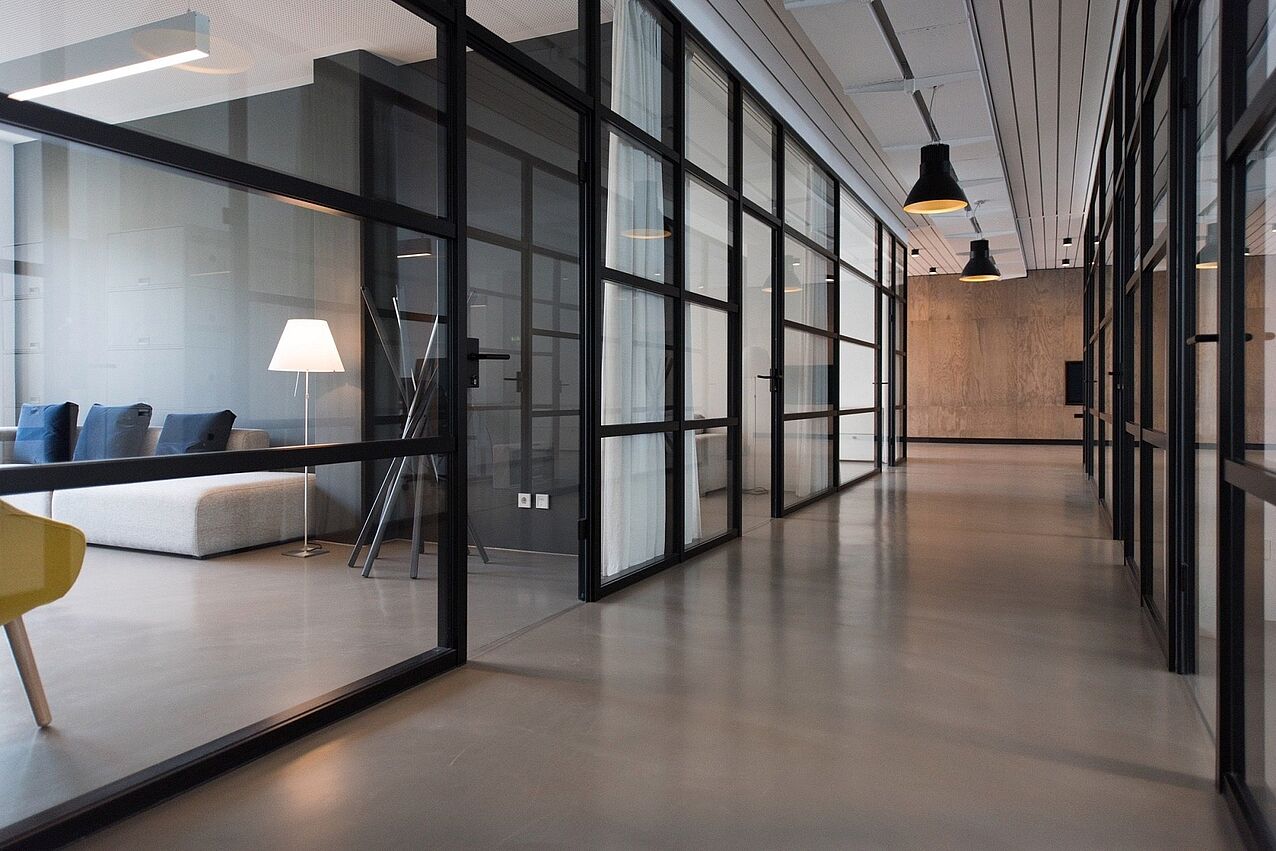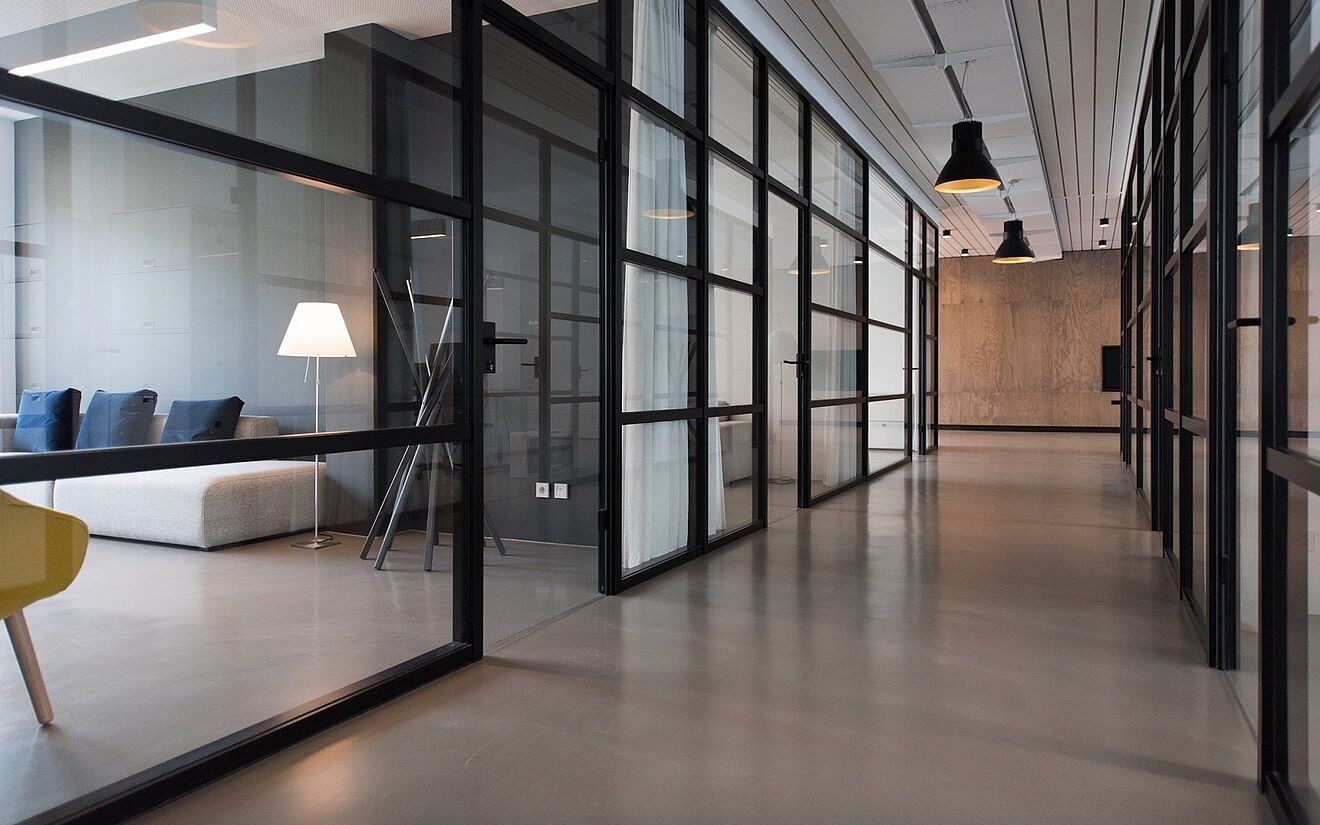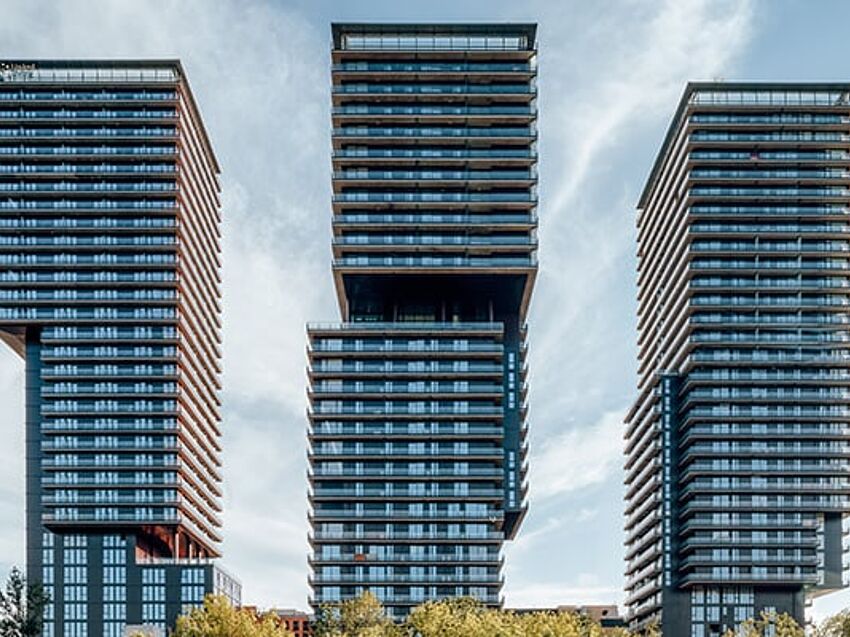Open-plan offices are modern. They facilitate communication between employees and ensure more exchange. But at the same time there is more noise than in individual offices, which is perceived as a stress factor by many employees. Architects offer numerous options here for efficient office design, for example by using sound absorbers. In this article you will learn how useful sound insulation in the office can look like on ceilings, walls and floors.

The stress factor of noise in open-plan offices
14 million Germans work in offices, increasingly in open-plan offices. The "open spaces" of the first generation had a disadvantage, however: The "noise" component was greatly underestimated in terms of indoor climate, health and the satisfaction of the employees. Printers, copiers and PCs constantly generate noise. Telephones rings, keyboards clatter, colleagues walk around and talk to each other. These disruptions reduce the performance capability of an employee by up to 10 percent. What can planners do to counter this?
Solutions for architects
A number of legal standards and laws already define how much space an office employee is entitled to, what lighting conditions are required at a minimum and what safety standards must be met.
When designing an open-plan office, architects can also rely on a wide range of sound-insulating and sound-absorbing materials in order to reduce the noise level. Since improvements are often expensive, it is recommended to include these components in the planning right from the start. Employees of future offices should be incorporated in the decision-making process.
The individual elements that can be installed on the floor, wall or ceiling fulfill several functions in the process. They provide for a pleasant room acoustics and improve the overall effect of the room through design aspects, such as colors. This creates workplaces that increase productivity and the sense of well-being.
Sound insulation in the office through smart partition systems
The open-plan offices of today need more flexibility and mobility. In addition to completing complex tasks on the computer, telephone conversations and team meetings are occurring that place different requirements on privacy, room size and quiet. Offices can be divided into sections by using partition wall systems or room dividers. Not only do they provide visual shielding, but also acoustic shielding. Specially clad surfaces that absorb sound and dampen noise are particularly effective. These include, for example, textiles, such as structured fabrics and felt, or wood in a relief structure.
Floor-to ceiling curtains, which are mounted in a double rail on the ceiling, are an extremely flexible alternative. Employees can open and close them as needed. The opaque version provides visual and sound protection. Transparent curtains let sufficient light into the room and also absorb some of the sound.
Footfall sound-insulating floor covering
Most open-plan offices are designed with carpeted floors, because they promise the best rest in terms of footfall sound insulation compared to other floor coverings, such as laminate or parquet. Even very thing models can reduce the sound by up to 20 dB. Up to 40 dB in reduction is possible with high-quality carpeting. It also reduces the reverberation effect. In open-plan offices, this should be a maximum of 0.5 to 0.8 seconds.
Sound absorbers on the ceiling
Architects can also use the office ceiling for sound insulation. Suspended grid ceilings reduce echoes. Lighting, ventilation elements and cable ducts can be installed behind them. One visually appealing option is wide-area ceilings with a wave structure. The slats made of melanin resin multiply the sound absorption surfaces.
Furthermore, floating ceiling panels or large acoustic sails are also possible. They can be combined with light sources, such as with LED light channels, in order to create a pleasant working atmosphere. Special ceiling lights that are coated with different materials can also absorb sound.
Cooperation between planners and office employees is important
In addition, office furniture, such as chairs, cabinets and attachment elements, is available that can reduce noise. A combination of hard, soft and non-woven material type materials achieve the highest sound insulation.
Read our article "The open-plan office of the 21st century" to find out what media architects and planners are using to make offices more efficient.




